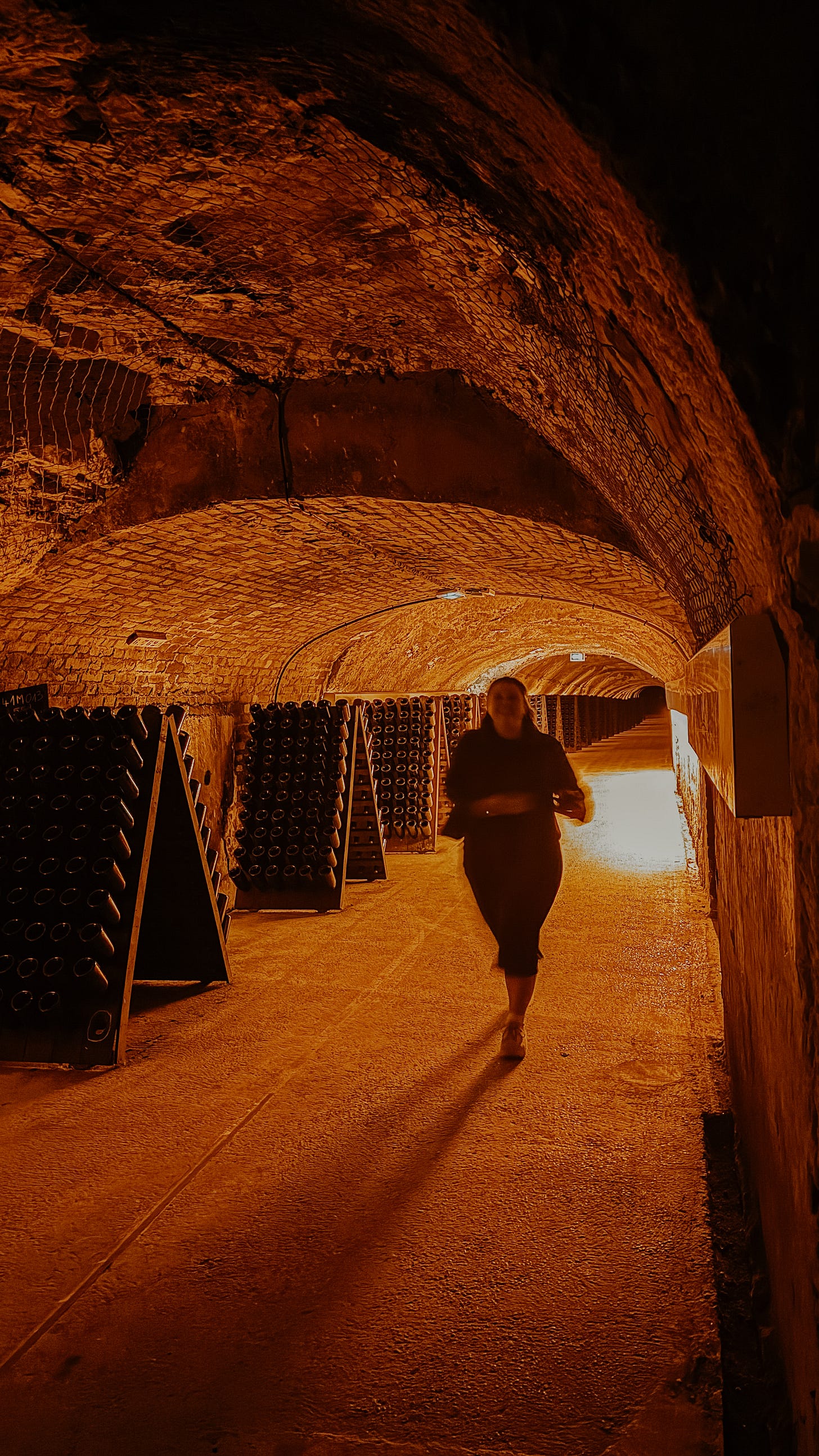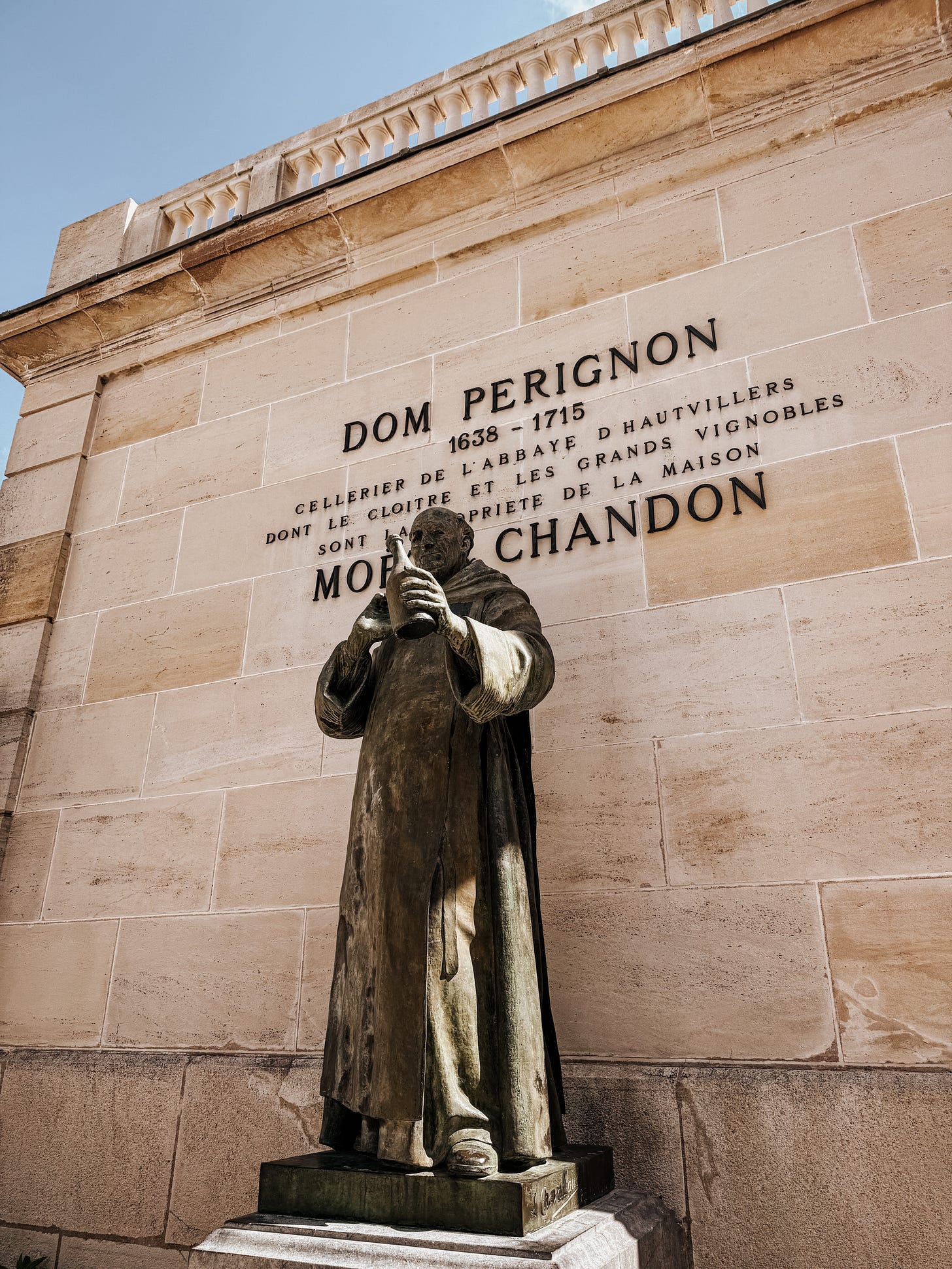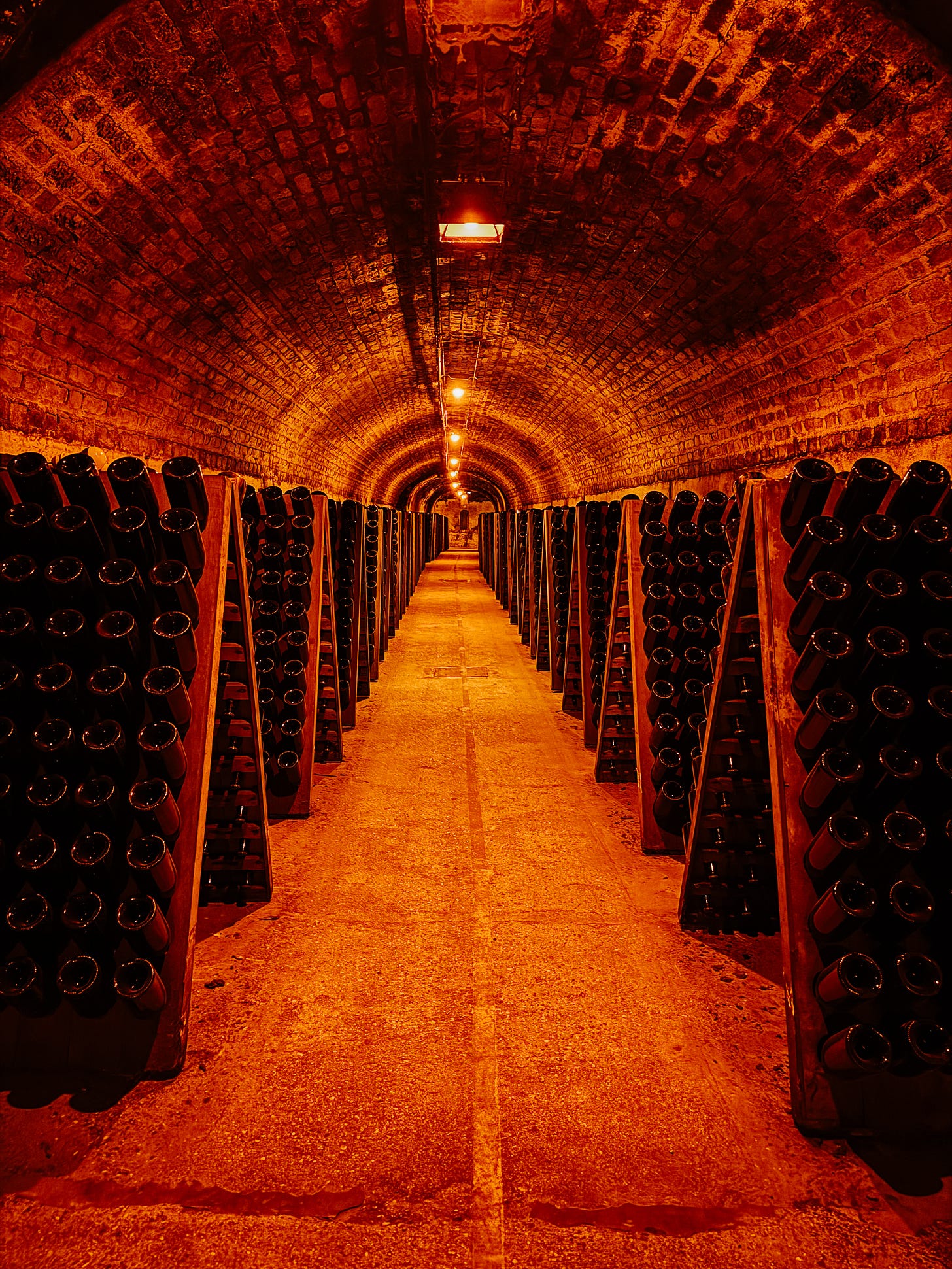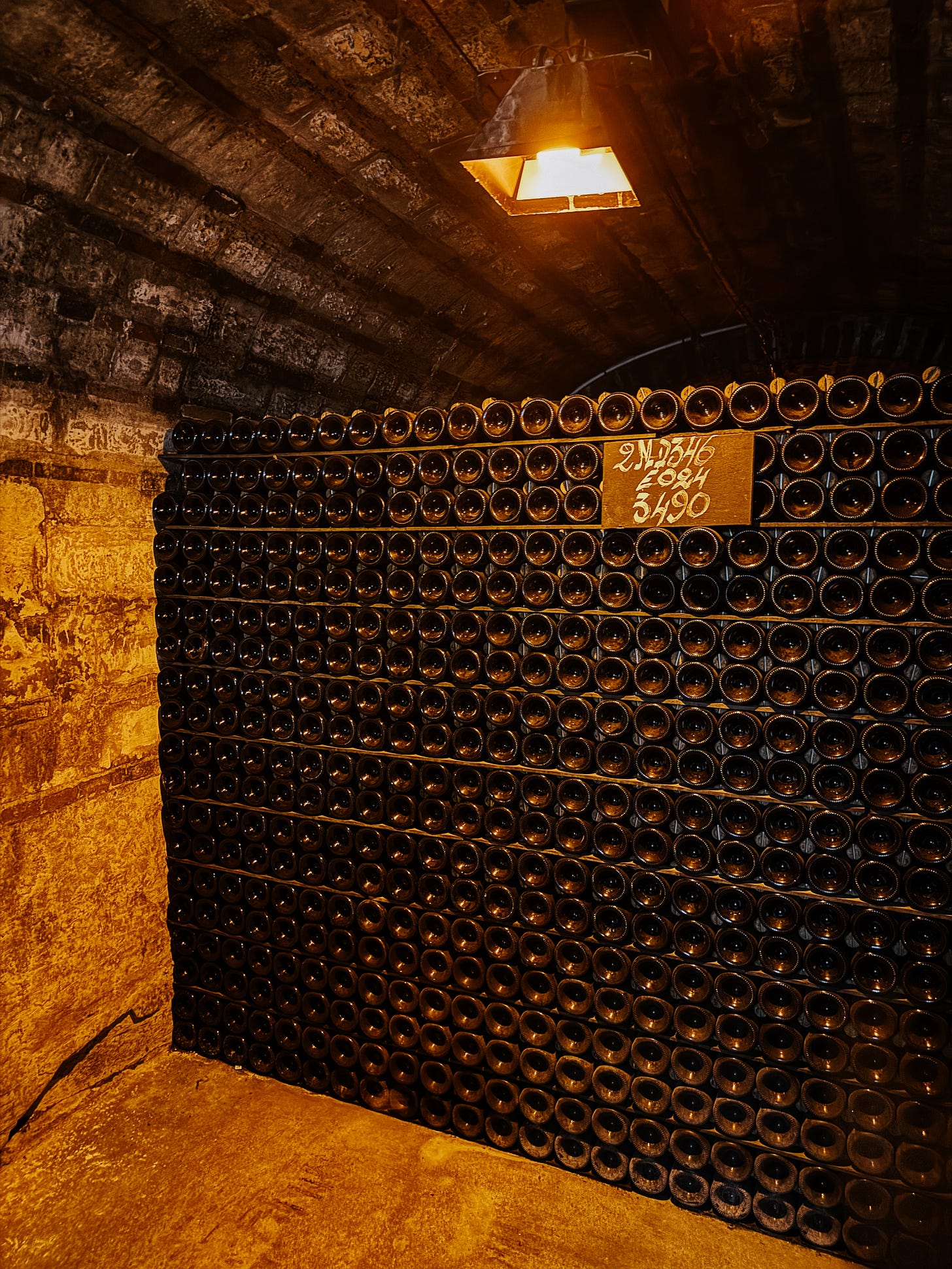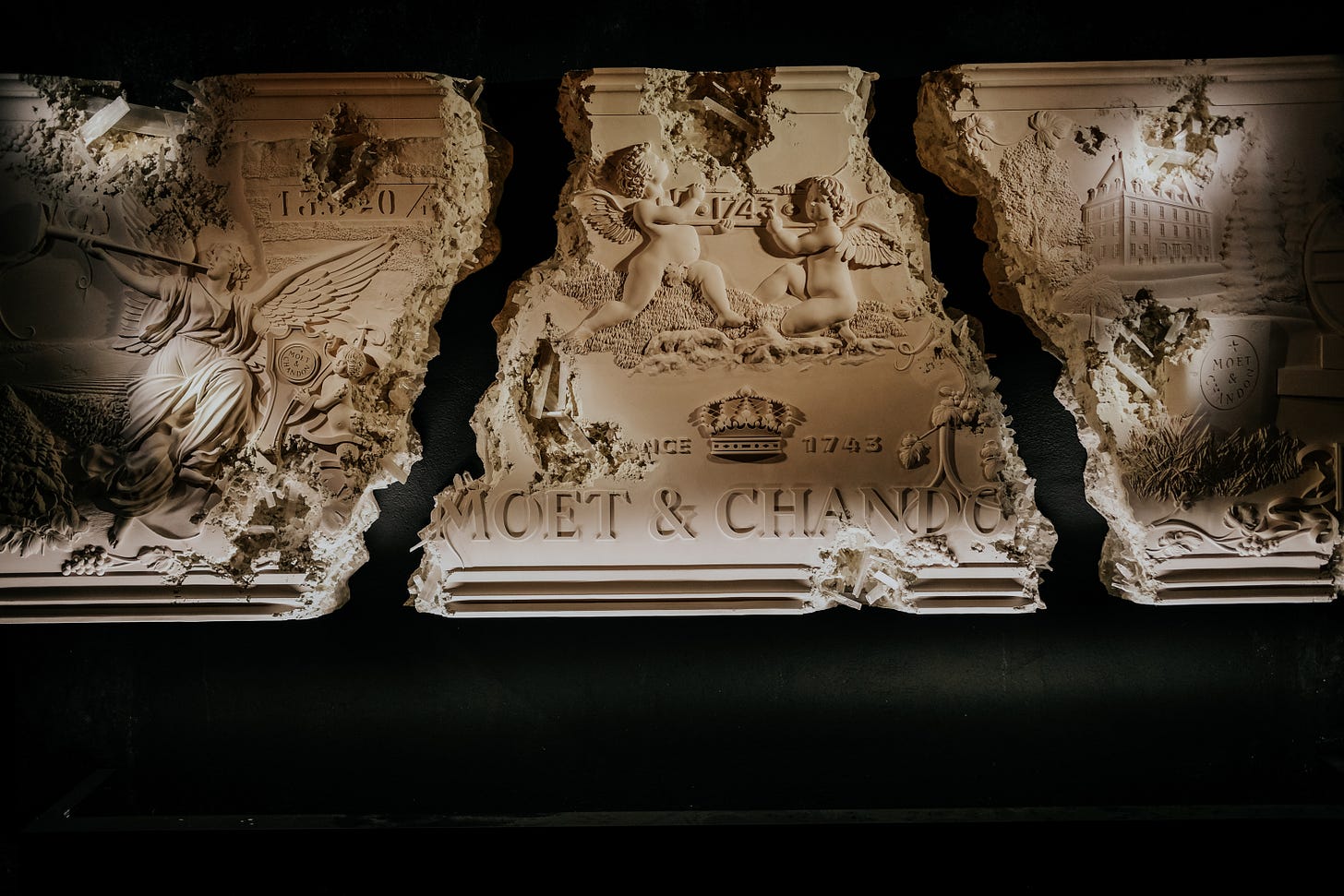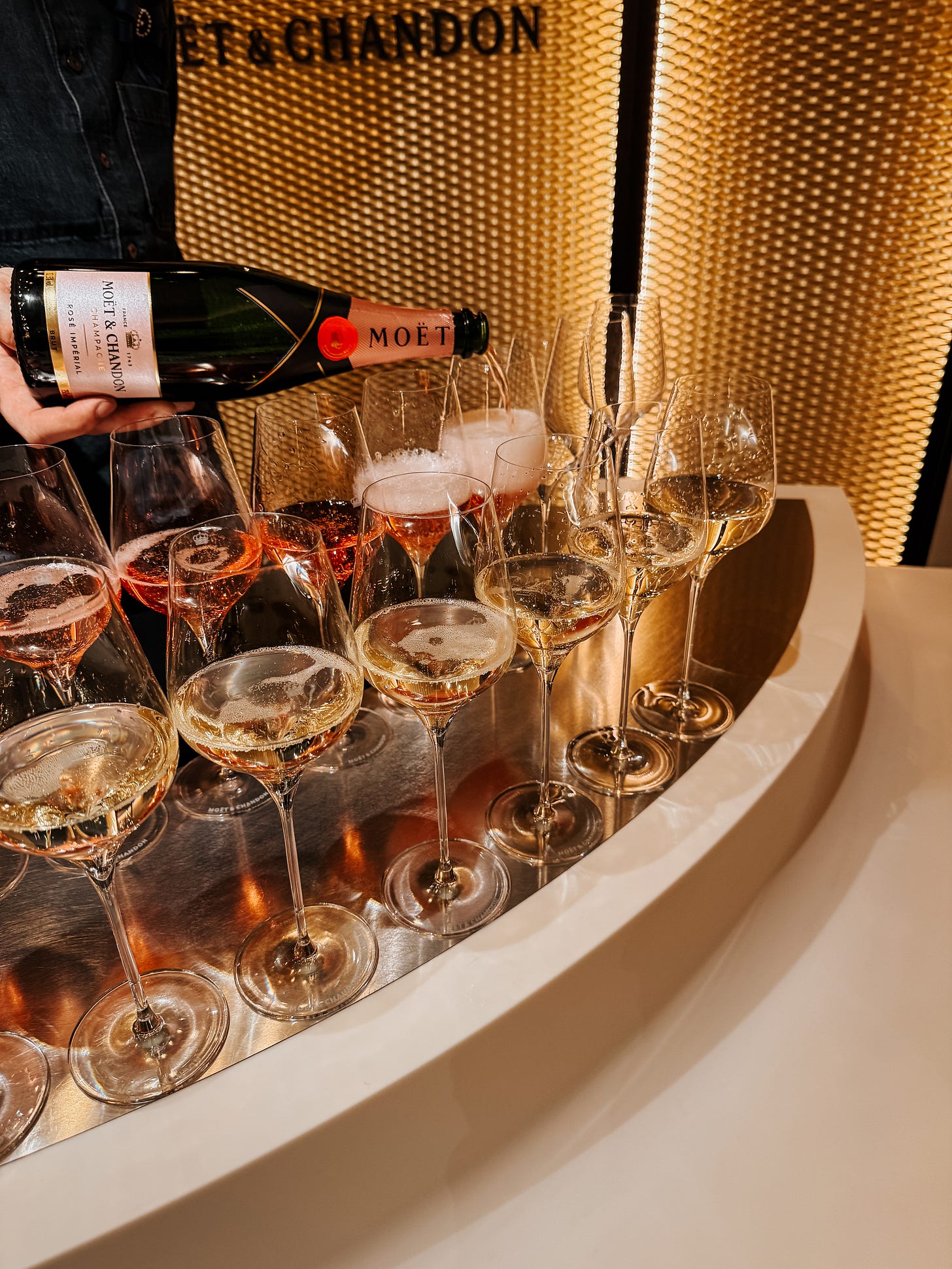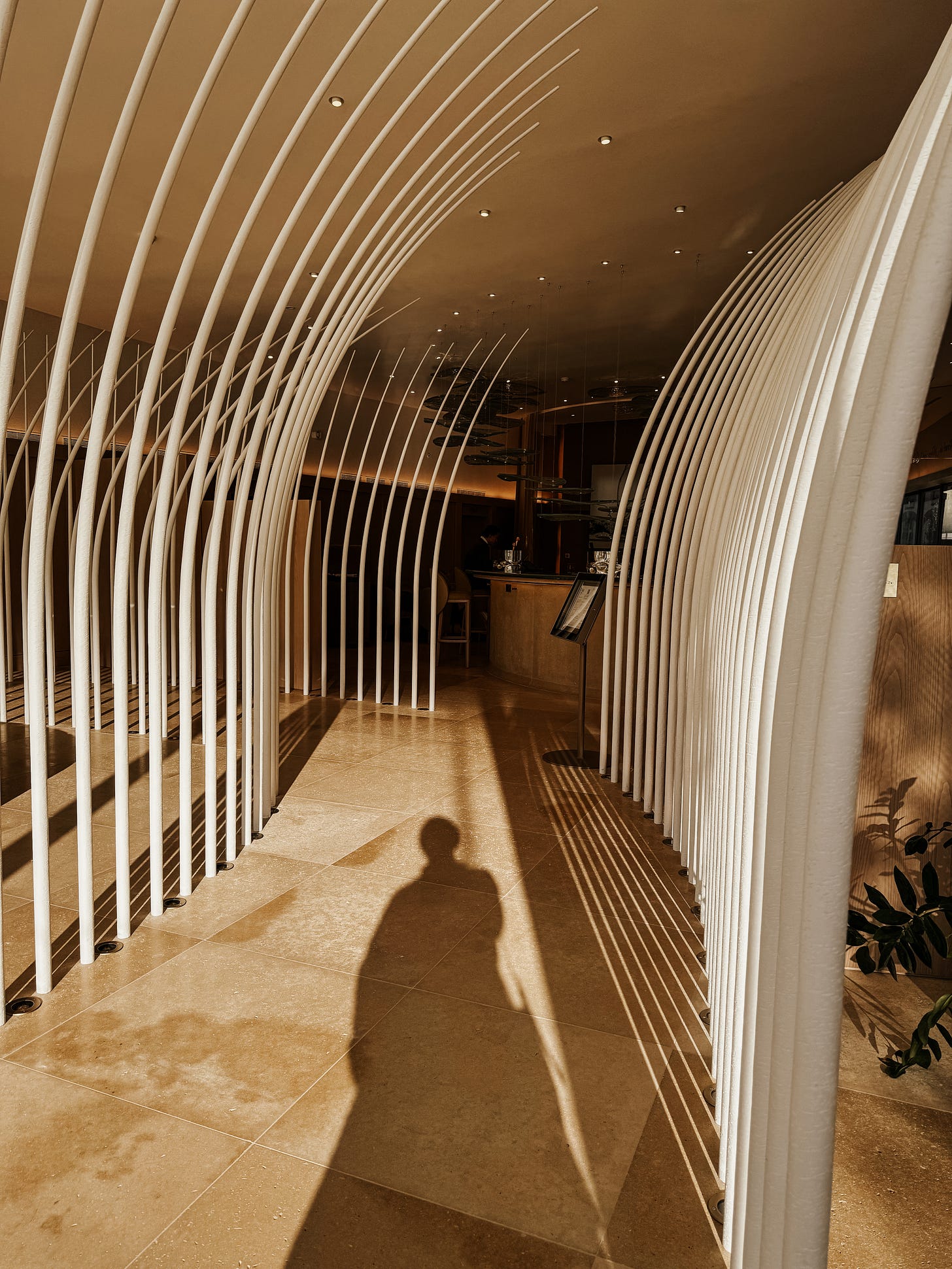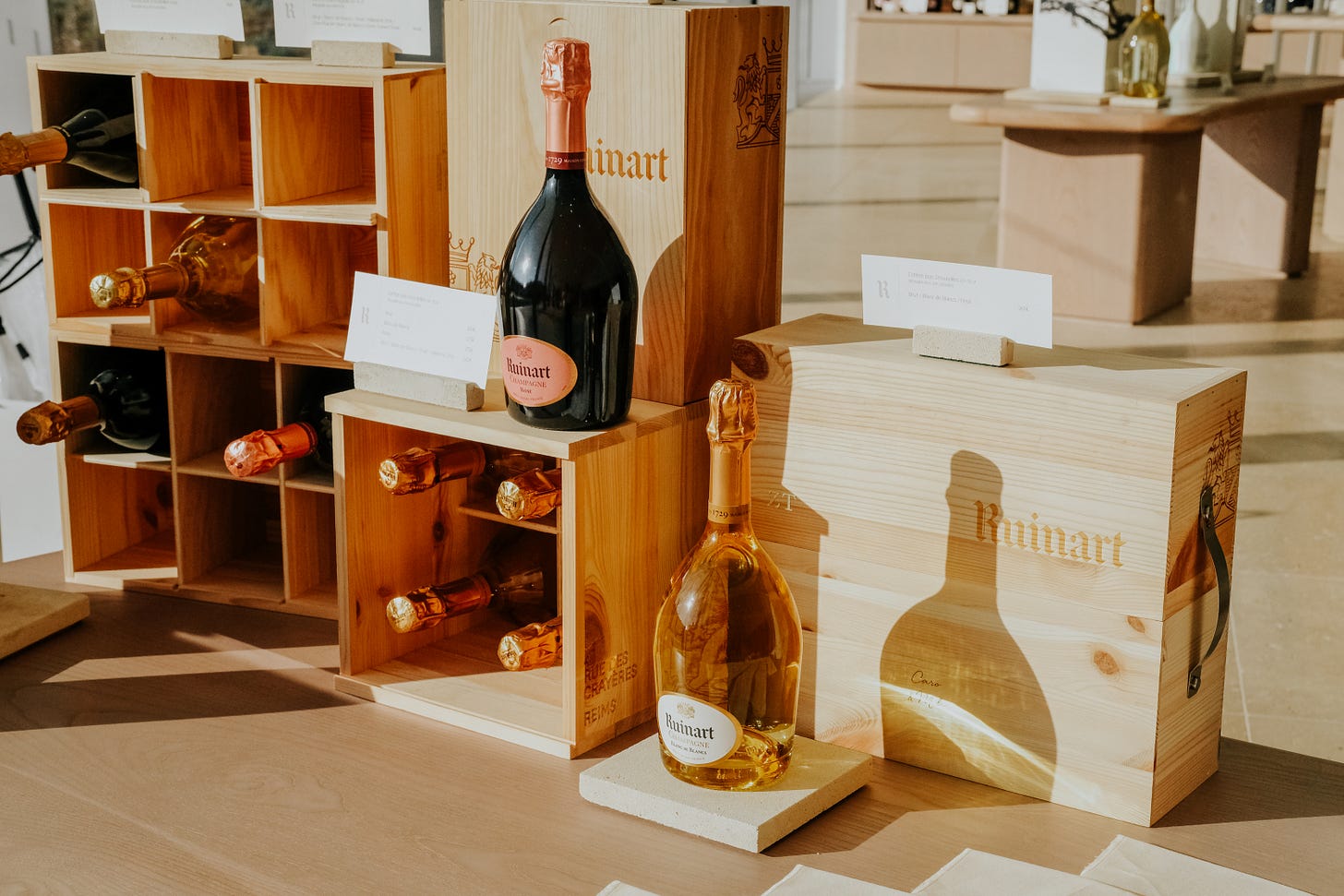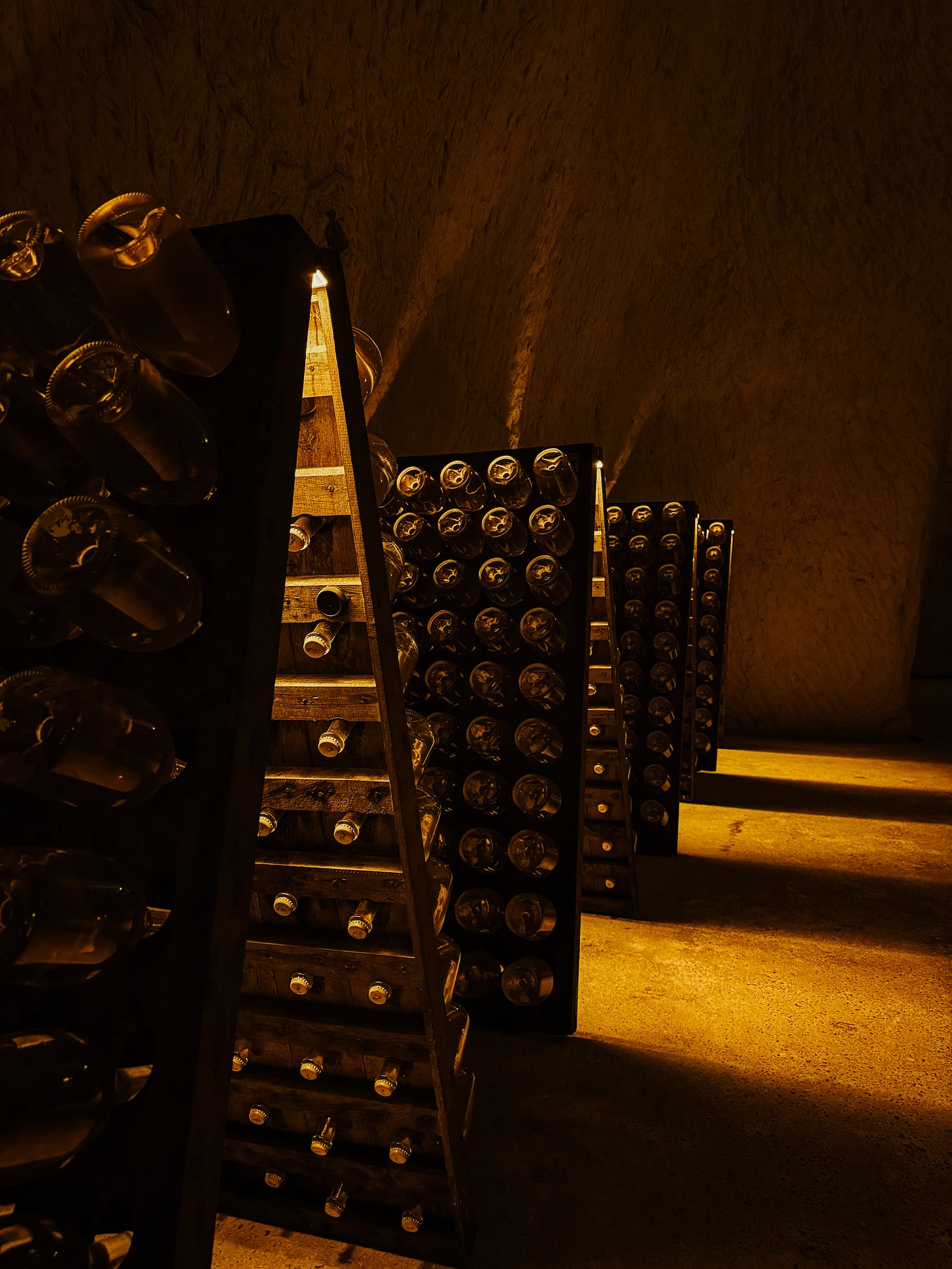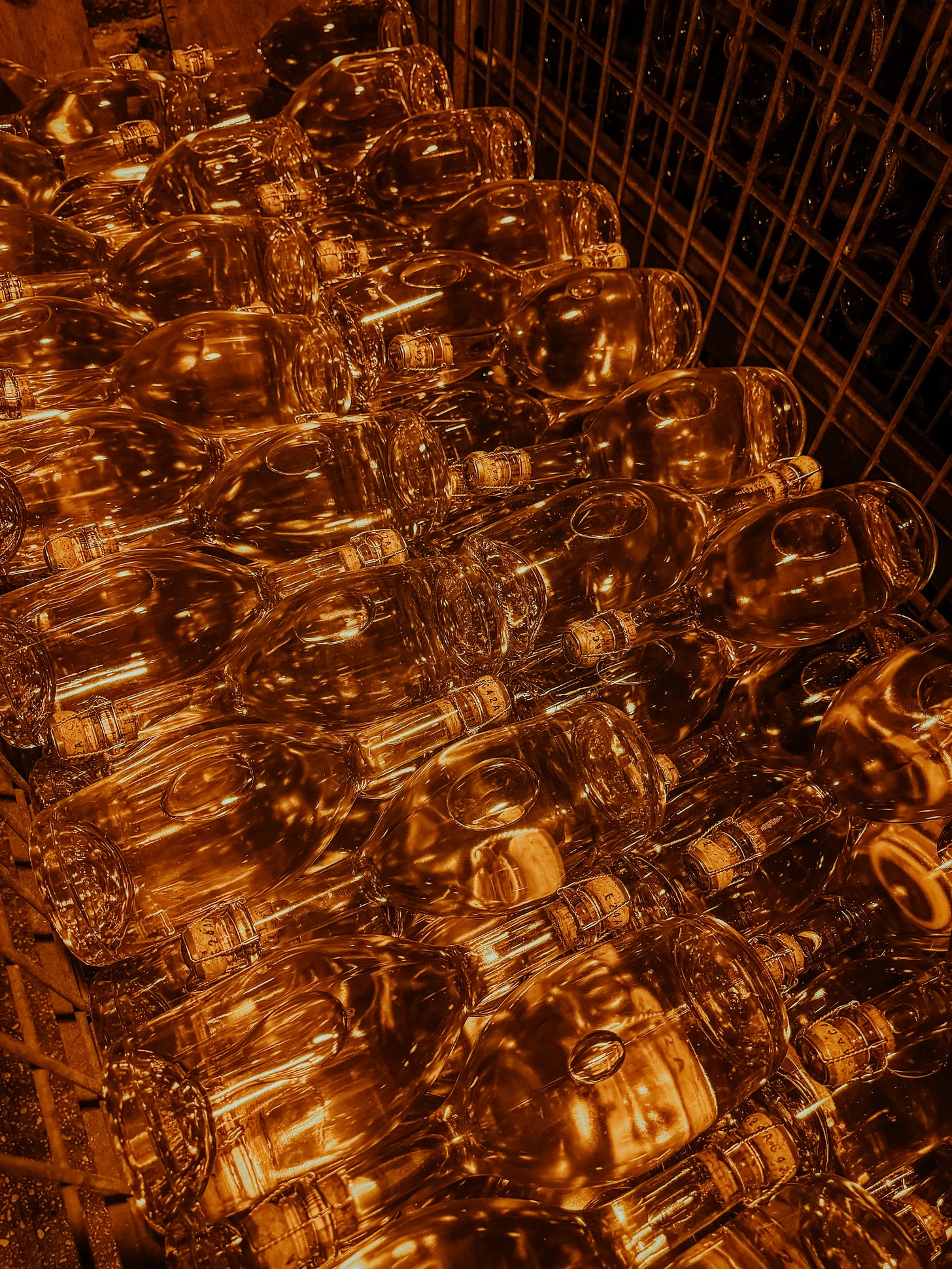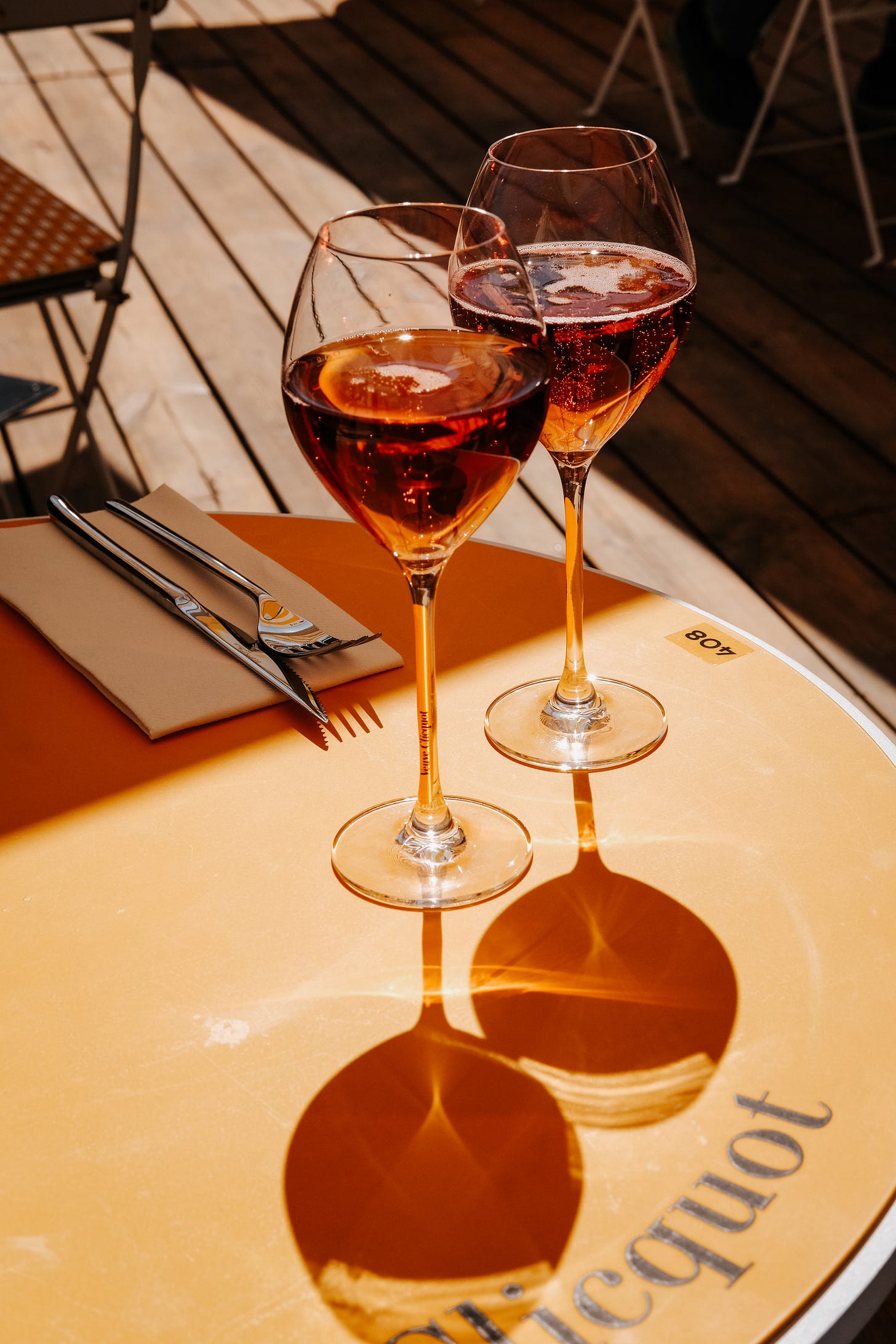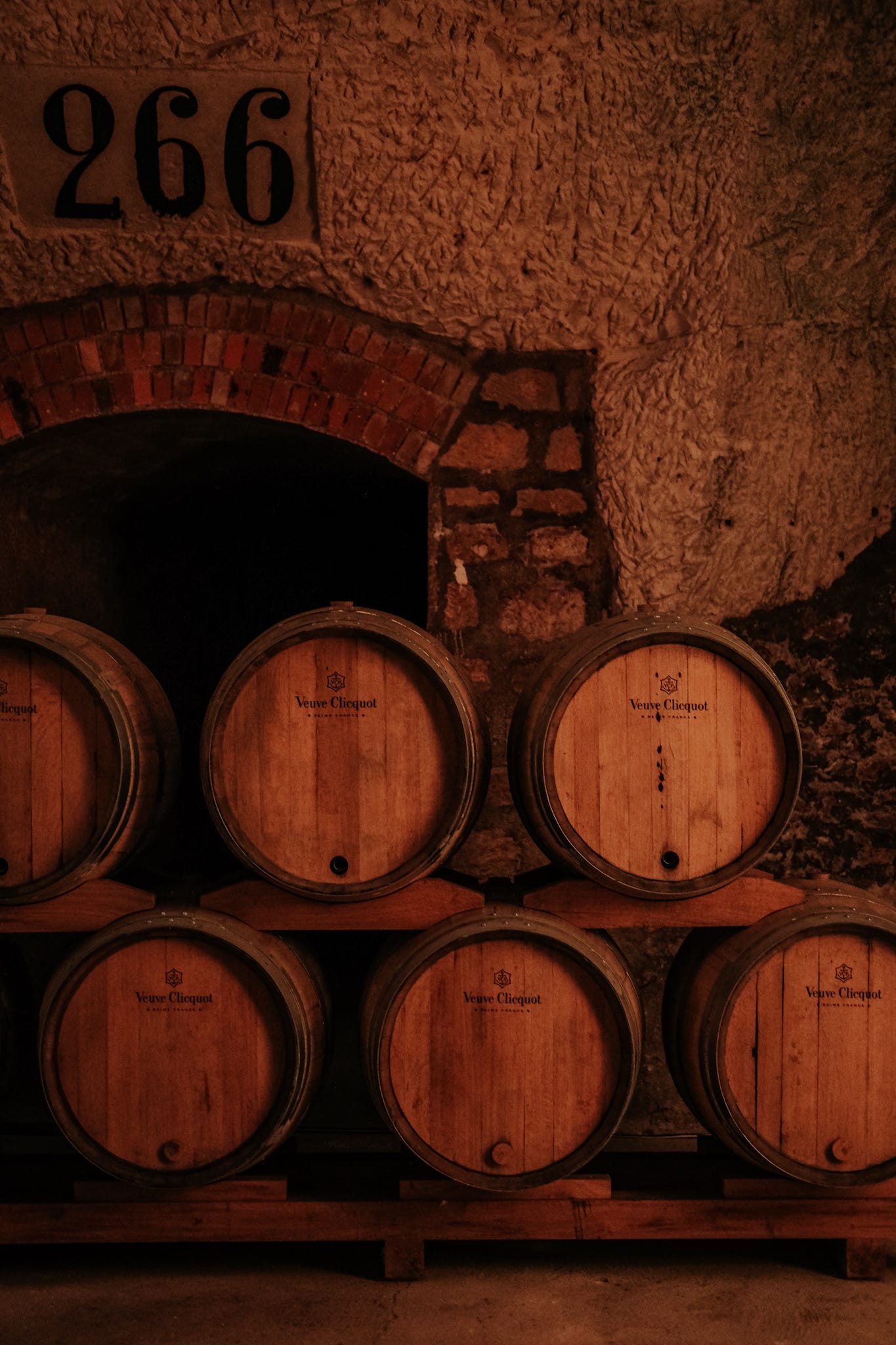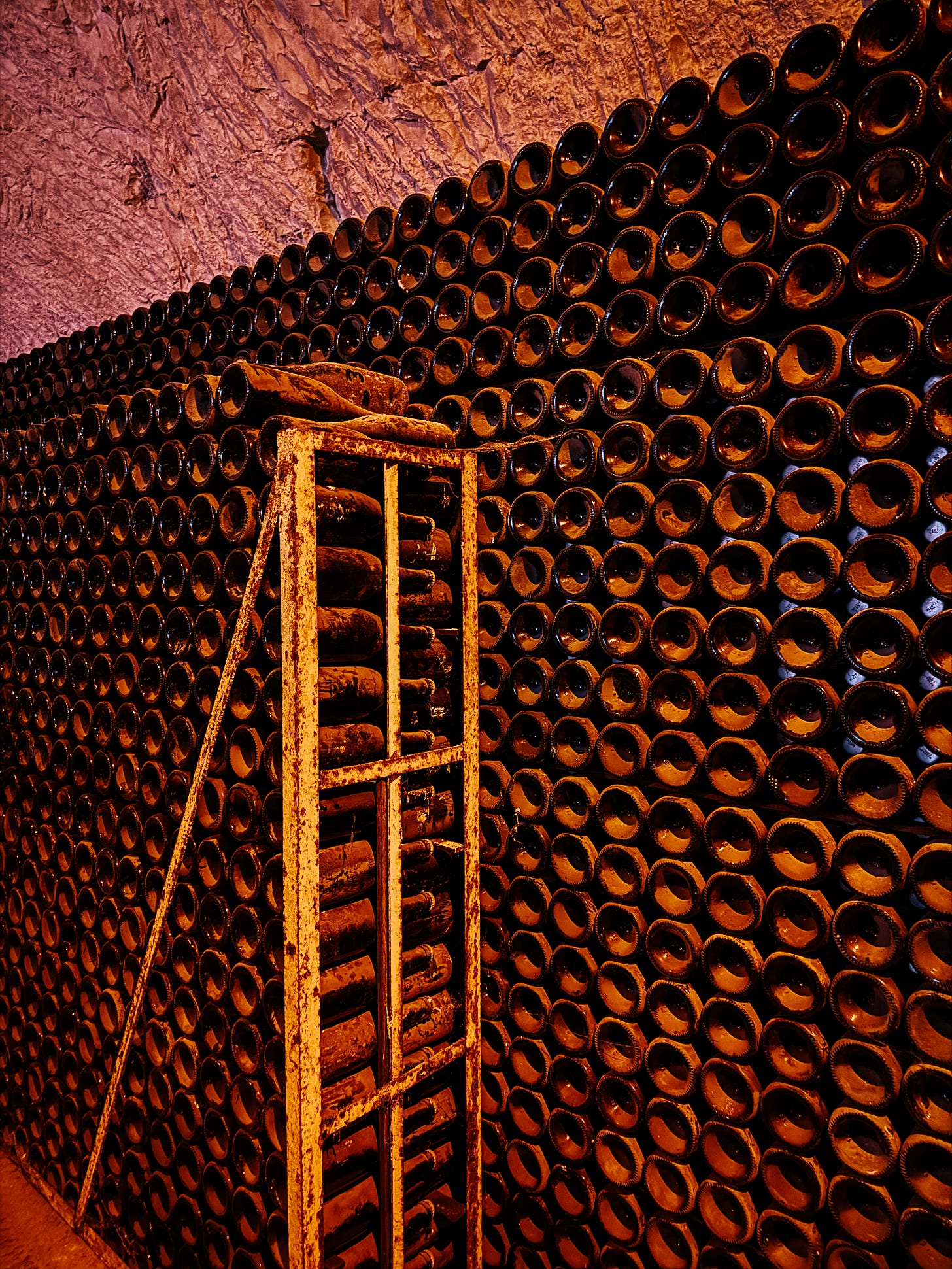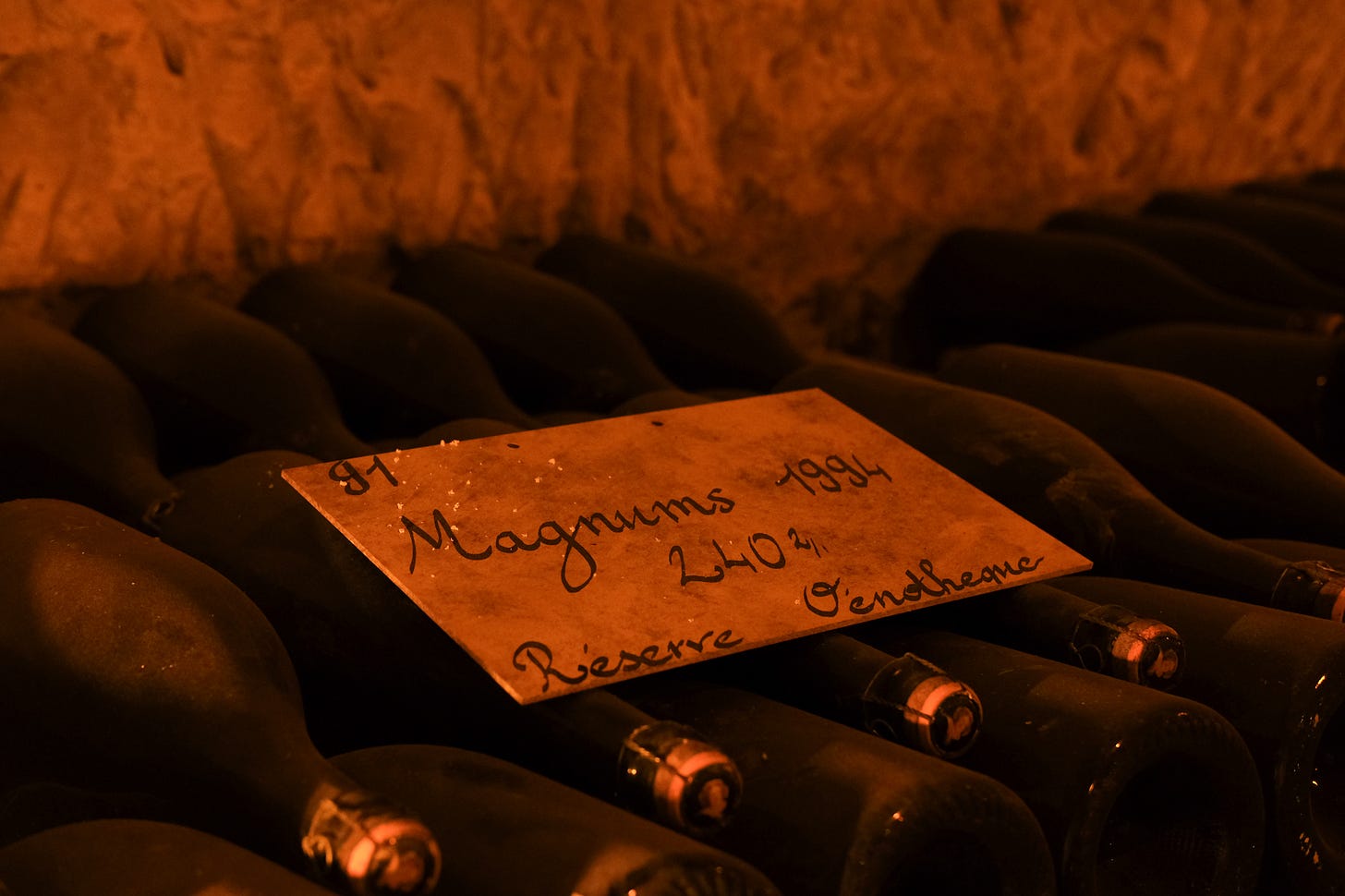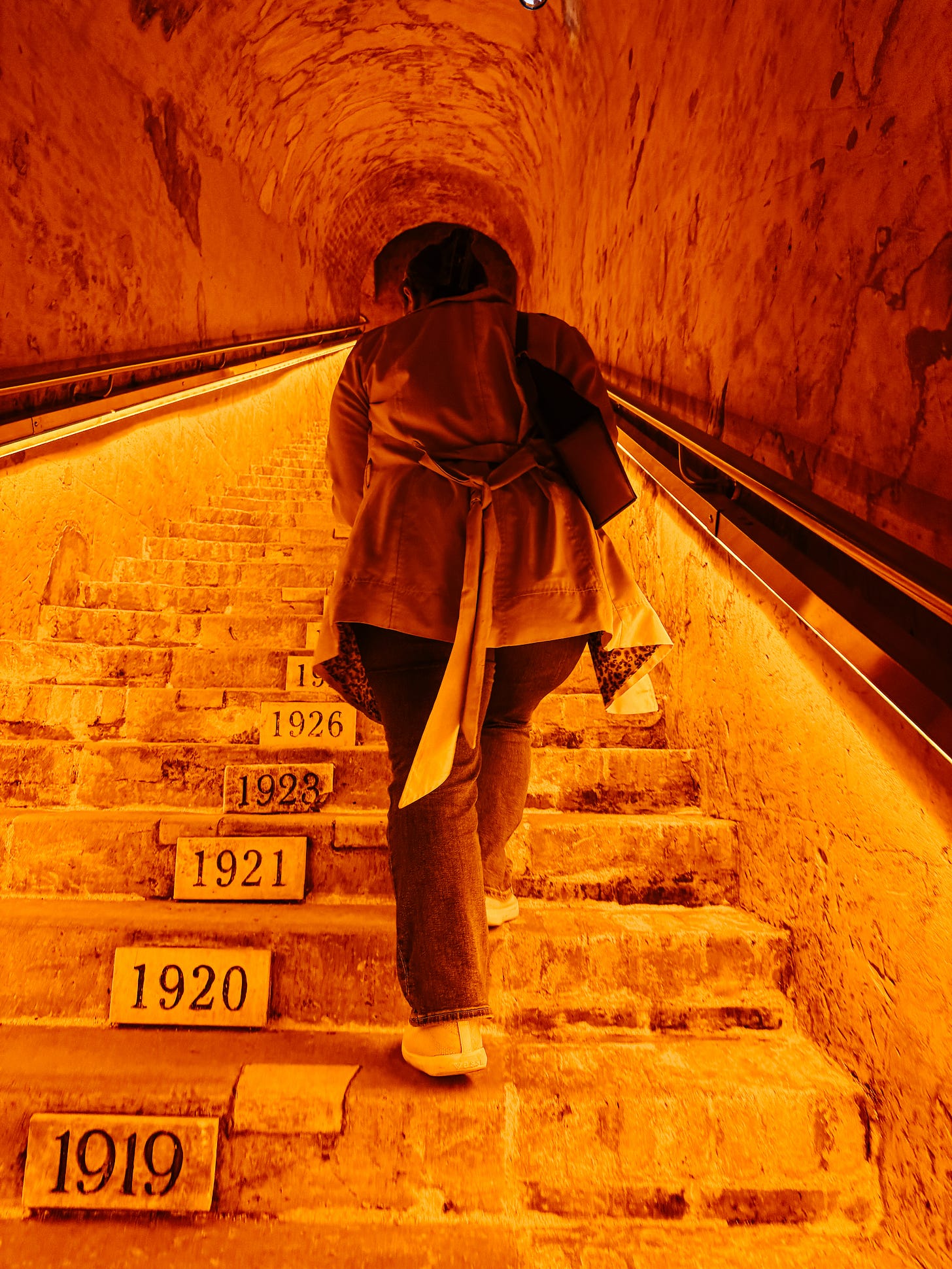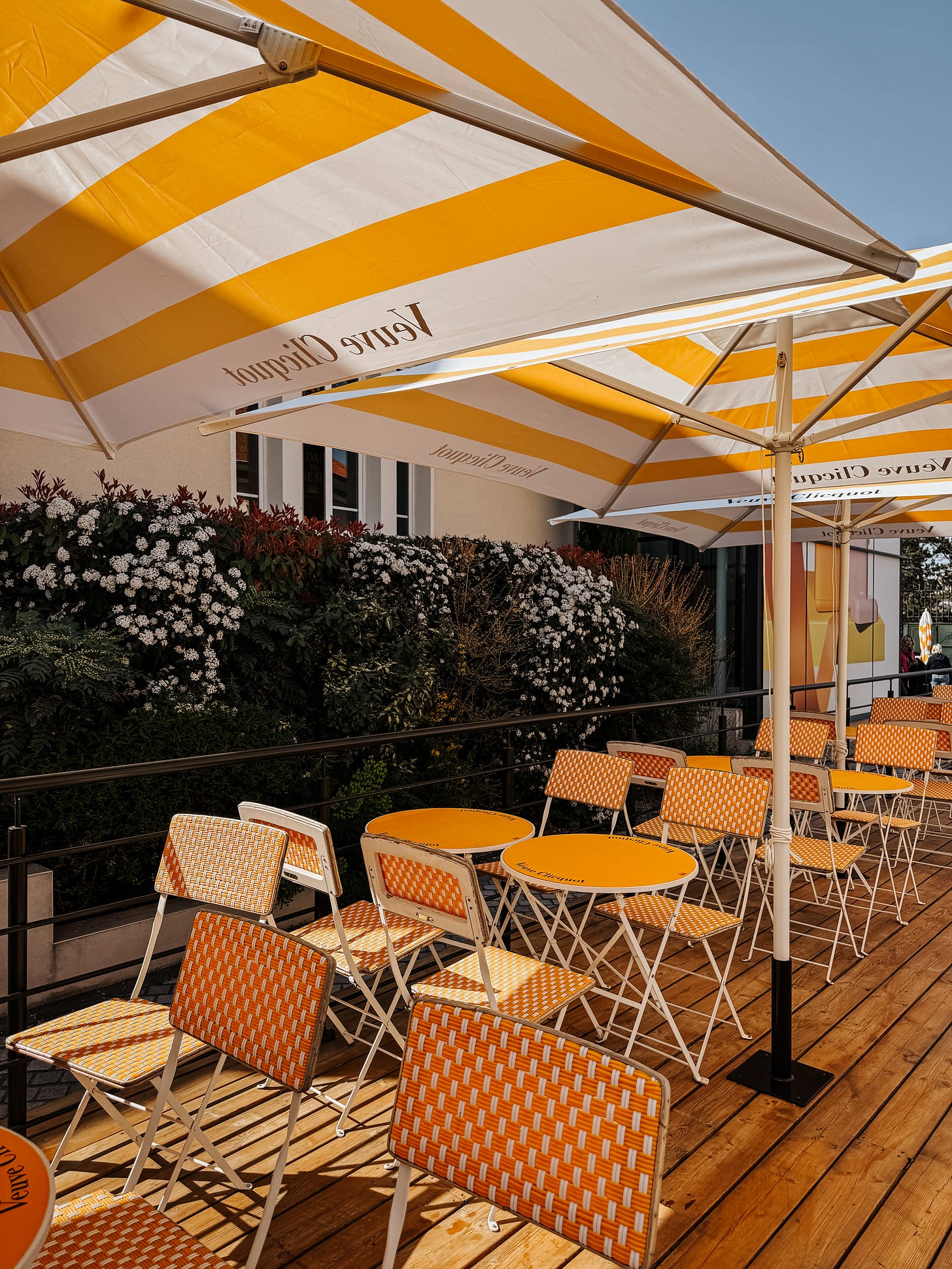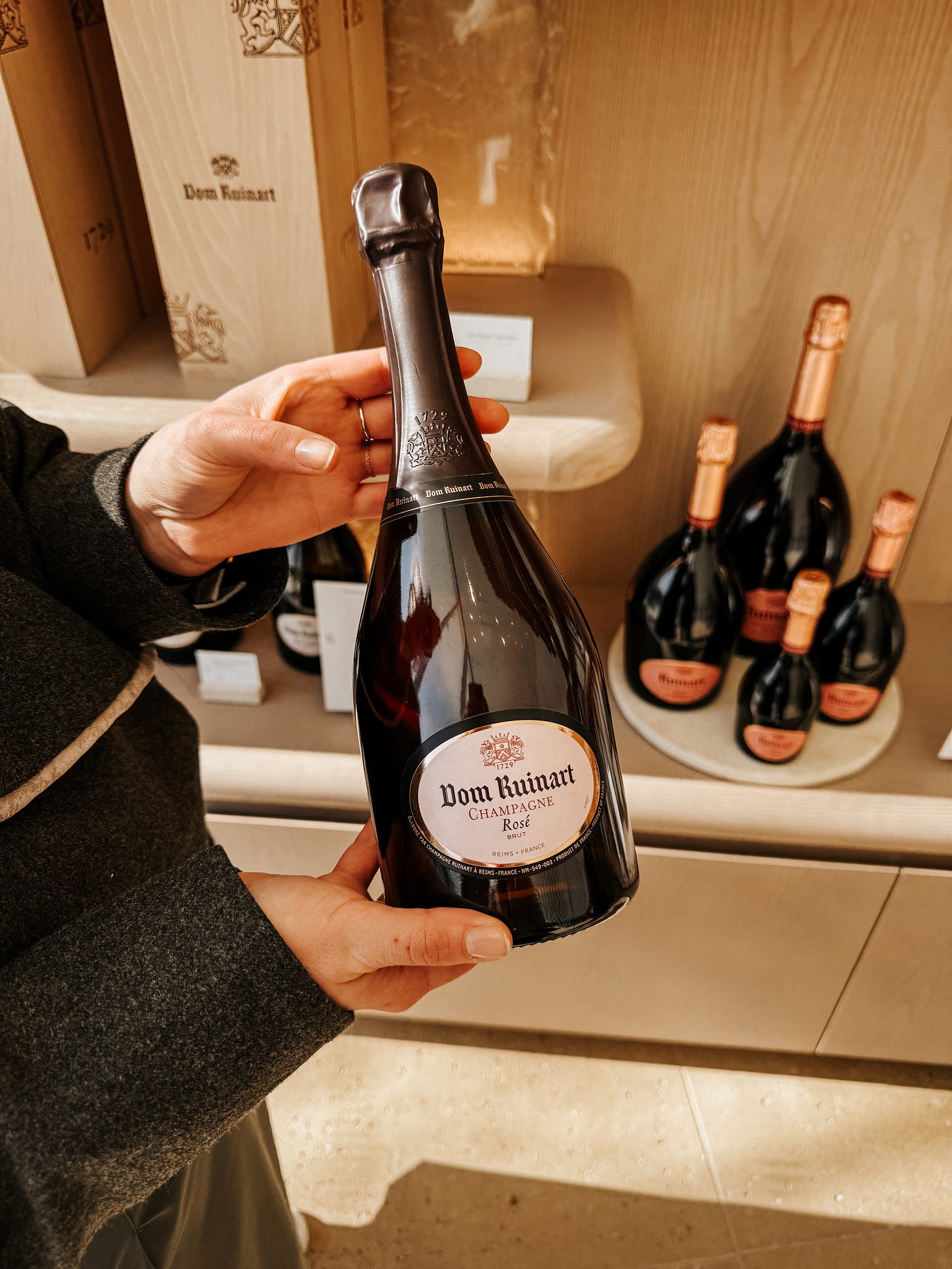A peek inside the cellars in Champagne
Warning: Super long post but mostly lots of sneaky photos. You're welcome.
This one is little overdue, but it’s the last installment of my wine trip through France. After a road trip through southern Burgundy the Rhône—from the northern hills of Côte-Rôtie and Hermitage all the way down south to Châteauneuf-du-Pape—I finished off my European excursion in Champagne before flying back to America.
Unlike other wine trips I have been on, where the focus is on tasting wine and seeing the vineyard, I was way more keen to see inside the cellars where the Champagne magic really happens. So I focused on booking tours in some of the famous Champagne houses, which were pricier and maybe a little touristy. I mean sure, I had to listen to the explanation of second fermentation and how Champagne is made over-and-over. But honestly? The cellars and the growers are the heart of Champagne, and hearing how sparkling wine is made five different times in two days is worth seeing that beating heart in person.
The first day started off with a tour at Moët & Chandon, the house connected to Dom Perignon and apparently the largest Champagne house in the world. Now I already knew that there would be a lot of bottles down there (approximately 1.4 billion total bottles are currently stored in Champagne cellars), but actually seeing it in person was something else. It was a like a fun house down there, long dark alleys with bottles tucked into parcels or sitting on riddling tables. It extended so long, according to Moët & Chandon, you could run a half marathon down there and never see the same bottle twice.
What was especially intriguing was the secret codes used for each parcel, labeled with a small hand written sign. It seems like some kind of ancient language, but really it’s a code that only the cellar master understands. They define which vintage or cuvée sits within each parcel, and keeps highly valuable bottles safe from greedy hands. This is especially intriguing after finding out that one of the parcels you walked by was actually a cuvée made special for the coronation of King Charles III, or a parcel that has been aging Champagne since 1952.
We ended the tour with two tasting, the Imperial Brut NV and their Imperial Rosé. Classic, consistent, high quality.
The second stop was another famous Champagne house Ruinart, and oh my god? It’s…the most beautiful place in the entire world, I fear.
The price for a tour at Ruinart is steep, but trust me, it’s worth it. Especially when you consider how you get to taste four different wines after your tour, when Ruinart can easily sell for $60 a glass in New York.
The cellars, located 40 meters underneath the city of Reims, are also iconic for being incredibly unique. Dating back to the Gallo-Roman period, the cellar is made of ancient chalk quarries that are known as an “architectural marvel.” Not only because they are beautiful, but because the cellars always sit at the ideal cellar temperature (12 degrees Celcius) with 100% humidity, no matter what the weather is outside. This creates the perfect aging environment for the wine. They are even listed as UNESCO World Heritage site.
After long drives through the region, the tour of Champagne ended at Veuve Clicquot, which felt appropriate. Madame Clicquot is just as important to the history of Champagne as Dom Perignon. She invented the first riddling table, which removes the sediment (lees) to create a clean wine, and she was the first to blend white and red wine to make rosé Champagne. (Did you know no other appellation in France can do that?)
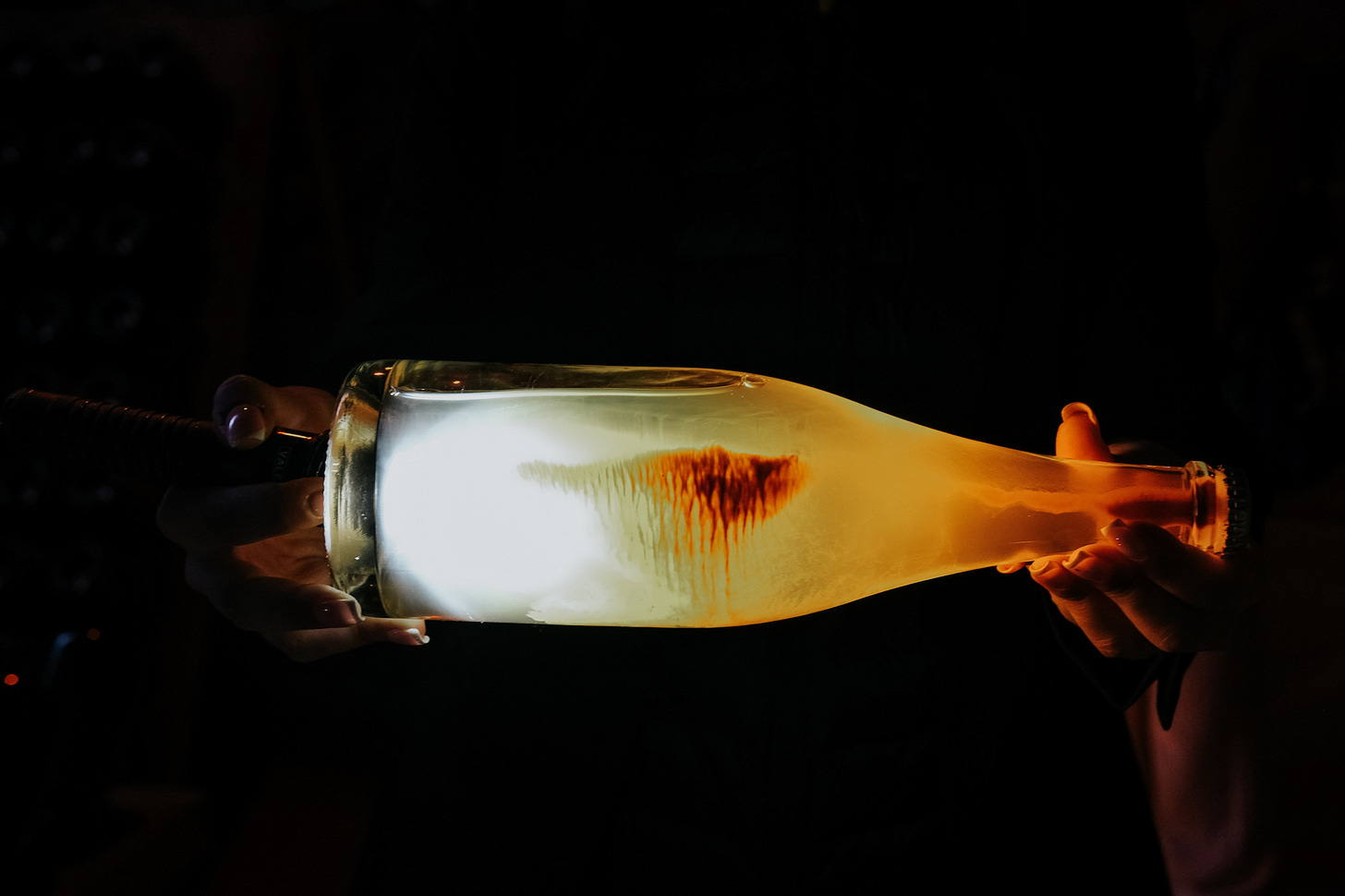
The tour ended with, of course, a taste of the iconic Yellow Label. Fun fact: The Veuve Clicquot color is now a Pantone color and is patented only for their use. After a taste of the wine, we ended our journey under those iconic yellow umbrellas, with burgers and a glass of the Vintage Rosé.
It’s kind of hard not to be happy on the patio of Veuve Clicquot, even though my exit out of Europe was looming a little too close for comfort. Alas, finishing my six months in Europe with a glass of Champagne just seemed like the right move, don’t you think?
Wine of the week
Since my trip to Ruinart made me cry twice—once during the light and sound show, the second when I sipped on a glass of their wine—I figured I would highlight the Champagne that brought me to tears. This is the Dom Ruinart Rosé.
Unfortunately, I was too emotional to make my usual notes. But I will share my conclusion.
Final conclusion: Notes of honey roasted nuts, dried aromatic flowers, and caramelized French toast. Insane.



